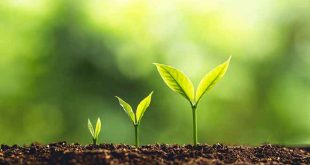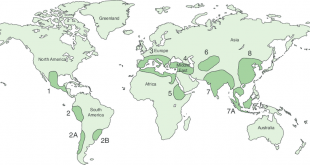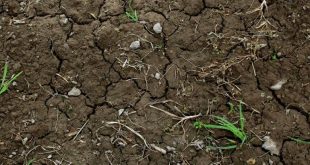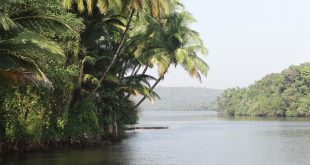Soil is the most common medium for plant growth. It also serves as a foundation material for engineering structures, for sewage disposal or mined as ore. However, human’s primary interest in soil has centered on its potential to support plants which provide food, fibre and forest products. In this article, …
Read More »Concepts of center of origin of cultivated crops (Part 3)
Do you know what is Center of Origin? The center of origin is a geographical area where the particular group of organisms (either domesticated or wild) first originated on earth. This is the 3rd part of the topic: Concepts of center of origin of cultivated crops. If you have somehow …
Read More »Concepts of center of origin of cultivated crops (Part 2)
Do you know what is Center of Origin? The center of origin is a geographical area where the particular group of organisms (either domesticated or wild) first originated on earth. This is the 2nd part of the topic: Concepts of center of origin of cultivated crops. If you have somehow …
Read More »Concepts of center of origin of cultivated crops (Part 1)
What is Center of Origin? The center of origin is a geographical area where the particular group of organisms (either domesticated or wild) first originated on earth. Center of Origin & Center of Diversity Many people believed that centers of origin are also centers of diversity. But, the centers of diversity …
Read More »Soils of Bangladesh: Formation and Tracts
Because of being an ‘agricultural country’, soil has always been a matter of concern in Bangladesh. Despite being a small country, soils of Bangladesh shows huge varieties. There are many recognized and unrecognized causes of such varieties. Normally, due to a diverse nature of physiographic condition, land type, parent materials …
Read More »Bacterial Habitats & Importance
Bacteria (singular: bacterium) are microscopic unicellular organisms that thrive in a variety of environments. These organisms can live in the soil, in the ocean and in the human gut. This organisms are available almost everywhere on our earth and are important to the planet’s ecosystems. Some species can live under …
Read More »Soil Environment
Soil is defined differently by soil scientists, and its definition has changed overtime. Since the year 1800, there have been more than 80 different definitions of soil available in literature. Generally, soil can be defined as the organic and inorganic materials on the surface of the earth that provide the …
Read More »Water Resources
Water: Water is a transparent and nearly colorless chemical substance that is the main constitute of Earth’s streams, lakes, oceans and the fluids of most living organisms. Resource: A resource is any physical material constituting part of Earth that people need and have value. Natural materials become resource when humans …
Read More »Ecosystem: Balance & Imbalance
The term ‘ecosystem’ was first used by A. G. Tansley in 1935. Tansley defined an ecosystem as a particular category of physical systems, consisting of organisms and inorganic components in a relatively stable equilibrium, open, and of various sizes and kinds. An ecosystem is a structural and functional unit of …
Read More »Energy Environment: Global Radiation Balance & Energy Budget
Global Radiation Balance There are various factors that influence the amount of radiation coming from the sun to the earth’s surface. Some of the radiation is reflected upward, some is scattered both upward and downward directions. Besides, some of the radiation is absorbed by the clouds and atmosphere. The rest …
Read More » Plantlet The Blogging Platform of Department of Botany, University of Dhaka
Plantlet The Blogging Platform of Department of Botany, University of Dhaka






